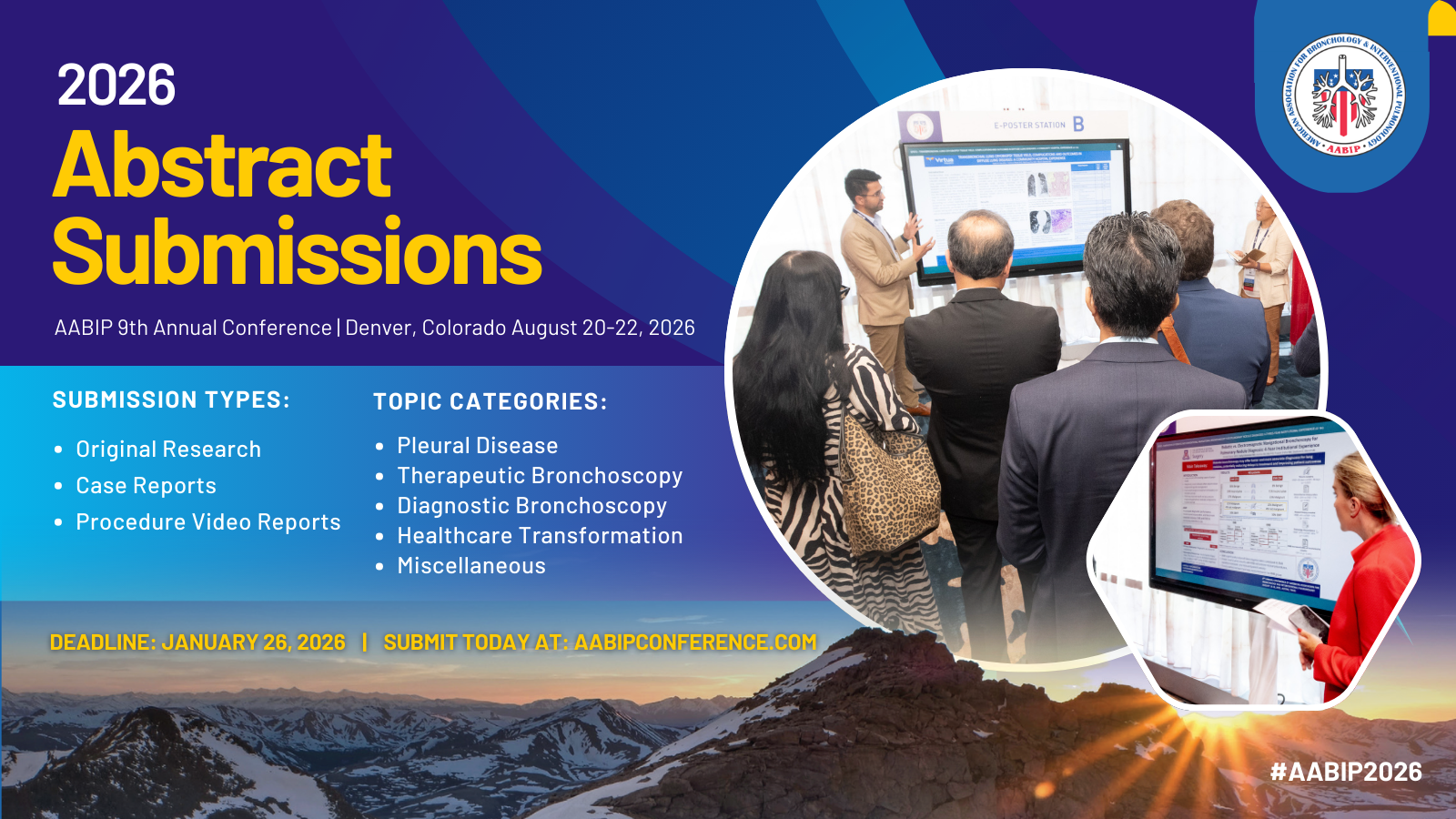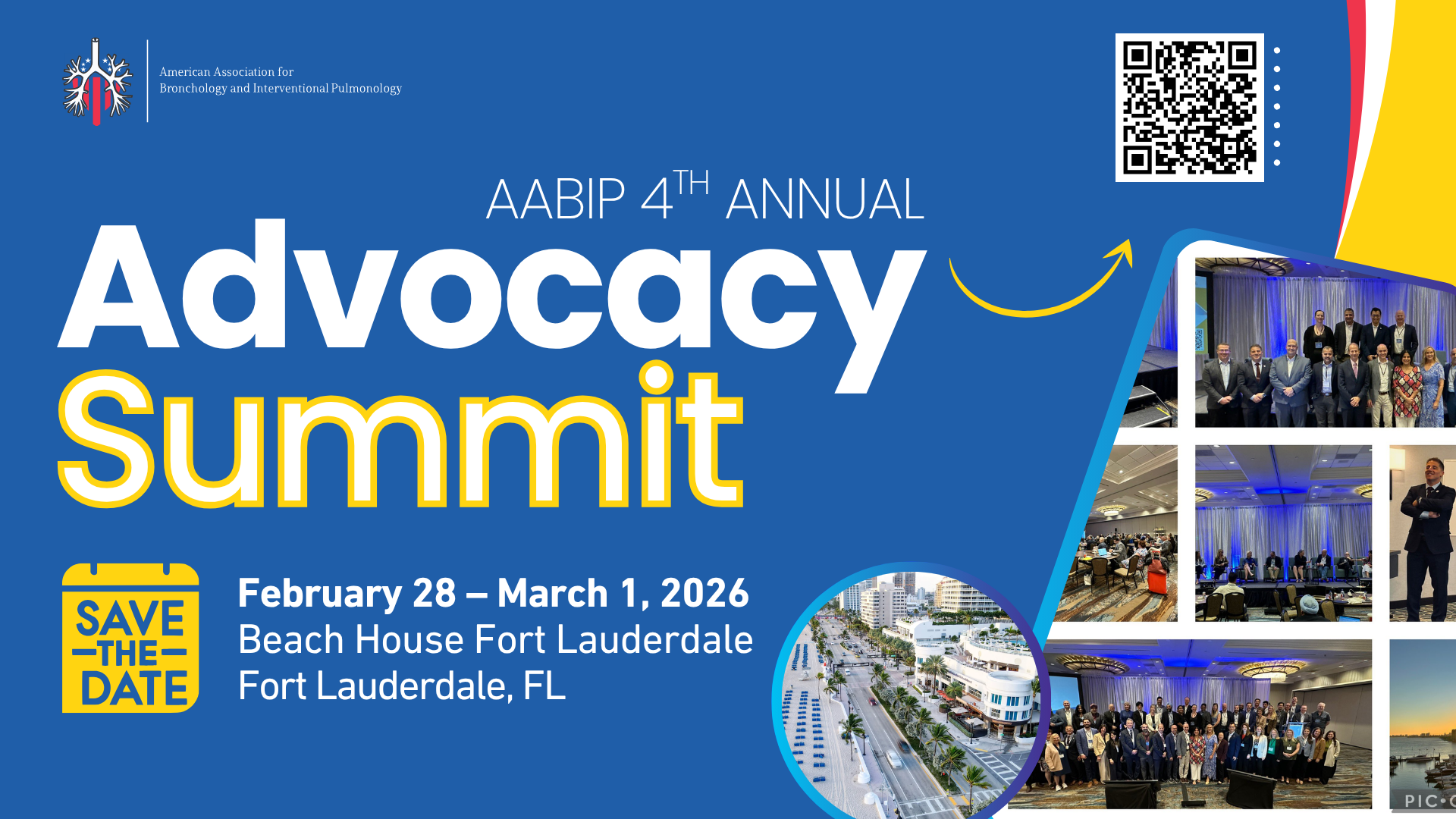IP Fellows Reading List
FISTULA MANAGEMENT
https://www.ncbi.nlm.nih.gov/pubmed/30059680
Review
Reference: Grewal HS, Dangayach NS, Ahmad U, Ghosh S, Gildea T, Mehta AC. Treatment of Tracheobronchial Injuries: A Contemporary Review. Chest. 2019;155(3):595-604.
Summary: Tracheobronchial injury is associated with significant morbidity and mortality. Common etiologies include blunt or penetrating trauma and iatrogenic injury that may occur during surgery, endotracheal intubation, or bronchoscopy. Early recognition of clinical signs and symptoms can help risk-stratify patients and guide management. There has been a paradigm shift in the management of tracheal injury towards minimally invasive modalities, such as endobronchial stent placement and this should be considered prior to making final management decisions.
Interventional treatment of tracheoesophageal/bronchoesophageal fistulas
https://www.ncbi.nlm.nih.gov/pubmed/31240352
Review
Reference: Schweigert M. Interventional treatment of tracheoesophageal/Broncho-esophageal fistulas. Chirurg. 2019;90(9):710-721.
Summary: Tracheoesophageal fistula (TEF) is an abnormal communication between the airway and the esophagus. Acquired TEF can be benign or malignant and treatment depends on the etiology, size and anatomy of the fistula as well as on the patient’s performance status. The interventional treatment of choice is endoscopic stent implantation, but surgical intervention is considered in patients with a good performance status for the treatment of TEF from benign conditions. If the patient is unfit for surgery, silicone stents should be used because they can more easily be removed after a longer time in situ compared to metal stents. Malignant fistulas are associated with a limited life expectancy and fully covered self-expandable metal stents (SEMS) are recommended.
Bronchoscopic advances in the management of aerodigestive fistulas
https://www.ncbi.nlm.nih.gov/pubmed/30416814
Review
Reference: Youness HA, Harris K, Awab A, Keddissi JI. Bronchoscopic advances in the management of aerodigestive fistulas. J Thorac Dis. 2018;10(9):5636-5647
Summary: This is an extensive review that discusses various therapeutic considerations in the management of aerodigestive fistulas.
Risk factor of bronchopleural fistula after general thoracic surgery: review article
https://www.ncbi.nlm.nih.gov/pubmed/29027099
Review
Reference: Okuda M, Go T, Yokomise H. Risk factor of bronchopleural fistula after general thoracic surgery: review article. Gen Thorac Cardiovasc Surg. 2017;65(12):679-685.
Summary: This is a review article evaluating the risk factors of bronchopleural fistula (BPF) following thoracic surgery. Risks included: neoadjuvant therapy, right lower lobectomy, or right sided pneumonectomy.
Neoadjuvant therapy and risk of bronchopleural fistula after lung cancer surgery: a systematic meta-analysis of 14 912 patients
https://www.ncbi.nlm.nih.gov/pubmed/27052116
Review
Reference: Li S, Fan J, Liu J, et al. Neoadjuvant therapy and risk of bronchopleural fistula after lung cancer surgery: a systematic meta-analysis of 14 912 patients. Jpn J Clin Oncol. 2016;46(6):534-46.
Summary: This is a meta-analysis evaluating the risk of BPF after neoadjuvant therapy in lung cancer. This study demonstrated an increased risk of fistula formation with surgery, neoadjuvant radiation, and chemo-radiation. Neoadjuvant chemotherapy does not increase the risk of fistula formation.
Management of air leaks post-surgical lung resection
https://www.ncbi.nlm.nih.gov/pubmed/31516907
Review
Reference: Bronstein ME, Koo DC, Weigel TL. Management of air leaks post-surgical lung resection. Ann Transl Med. 2019;7(15):361.
Summary: Rates of post-operative air leak have varied in the literature, but most large series report a rate between 20–33% after elective pulmonary resection. This review article discusses several interventions ranging from conservative, noninvasive to surgical management for persistent air leak. Techniques that are described include: discontinuation of suction on the Pleur-evac, fibrin patches, pleurodesis, EBV placement.
Persistent air leaks: a review with an emphasis on bronchoscopic management
https://www.ncbi.nlm.nih.gov/pubmed/29268535
Review
Reference: Lazarus DR, Casal RF. Persistent air leaks: a review with an emphasis on bronchoscopic management. J Thorac Dis. 2017;9(11):4660-4670.
Summary: This is a review of bronchoscopic management of BPF/persistent air leak. This includes conservative management, surgical intervention, valve placement, and use of sealants.
Airway Covered Metallic Stent Based on Different Fistula Location and Size in Malignant Tracheoesophageal Fistula
https://www.ncbi.nlm.nih.gov/pubmed/26422803
Clinical Trial
Reference: Wang H, Tao M, Zhang N, et al. Airway Covered Metallic Stent Based on Different Fistula Location and Size in Malignant Tracheoesophageal Fistula. Am J Med Sci. 2015;350(5):364-8.
Background: This is a retrospective study assessing the effect of metallic airway stent insertion for the treatment of malignant TEF in 63 patients from 2006- 2014. Different stents were placed based on the location and size of the fistula.
PICO:
Populations:
- 63 patients
- 12 patients had lung cancer and 46 had esophageal cancer
Intervention:
- Metallic airway stents were placed in 55 patients
- Double stenting was done in 8 patients
Comparison:
Outcome:
- Overall mean survival: 163 days
- Complete fistula closure in 45 patients (71.4%) and incomplete closure in 18 (28.6%).
- 28 patients developed chest pain, 2 patients had stent migration.
- 2 patients with double stenting had delayed massive hemoptysis and 2 had airway restenosis.
Take Home: It is safe and feasible to place various covered metallic stents based on fistula location and size for the palliative treatment of malignant TEF.
Combined airway and oesophageal stenting in malignant airway-oesophageal fistulas: a prospective study
https://www.ncbi.nlm.nih.gov/pubmed/20525708
Clinical Trial
Reference: Herth FJ, Peter S, Baty F, Eberhardt R, Leuppi JD, Chhajed PN. Combined airway and oesophageal stenting in malignant airway-oesophageal fistulas: a prospective study. Eur Respir J. 2010;36(6):1370-4.
Background: This is a prospective study that included 112 patients with esophageal and lung cancer and assessed their QoL before and after stent insertion. It also examined the role of treatment and location of aero-esophageal fistula (AEF) as factors influencing survival in AEF patients managed with airway and/or esophageal stent insertion.
PICO:
Populations:
- 112 patients (98 males and 14 females)
- Median age 52 years
- 83 (74%) patients had advanced lung cancers (NSCLC, n=73; and small-cell lung cancers, n=10)
- 29 (26%) patients had esophageal cancer.
Intervention:
- 65 (58%) patients underwent airway stent insertion
- 37 (33%) patients underwent esophageal stent insertion
- 10 (9%) underwent both airway and esophageal stent insertion
Comparison:
Outcome:
- All patients had initial success of fistula closure
- 7 (6%) patients developed respiratory failure and required transient ventilator support (4 patients with airway stenting, 2 patients with double stents and 1 patient with esophageal stenting).
- None of the patients developed stent migration or needed stent repositioning.
- Mean overall survival: 236.6 days (airway stent 219.1 days, esophageal stent 262.8 days and combined airway–esophageal stent 252.9 days)
- Survival was significantly lower in patients who received only airway stent placement compared to those who received esophageal or double airway stent.
- Carina, left main bronchus and trachea had a higher survival than right main bronchus.
Take Home: Overall QoL scores improved significantly after stent placement in patients with AEF. There was no significant difference between the groups, demonstrating that airway and/or esophageal stent insertion was appropriate in improving the overall QoL.
The treatment strategy for tracheoesophageal fistula
https://www.ncbi.nlm.nih.gov/pubmed/26807286
Clinical Trial
Reference: Ke M, Wu X, Zeng J. The treatment strategy for tracheoesophageal fistula. J Thorac Dis. 2015;7(Suppl 4):S389-97.
Background: Most TEF are due to malignancy and these patients have a short survival time. The treatment of TEF is challenging. Surgical intervention is often not an advisable option due to the advanced malignancy and poor performance status of these patients. Bronchoscopic intervention provides an opportunity to palliate symptoms and reconstruct the airway and esophagus. In this retrospective study of 61 patients, the authors focused on the application of endoscopic interventional therapy with airway stenting.
PICO:
Populations:
Intervention:
- Airway SEMS: 43 patients
- Double stenting: 25/43 patients
- Airway silicone stent: 18 patients
- Double stenting 10/18 patients
Comparison:
- Metallic stent to silicone stent
Outcome:
- Metallic stent group: 28 cases (65.1%) achieved CR and 15 cases (34.9%) with a PR.
- Double stenting: 24/25 cases (96%) achieved a CR.
- Silicone stent group: 13 cases (72.2%) obtained a CR and 5 cases (27.8%) with a PR.
- All 10 cases that received double stenting reached CR.
Take Home: In total, all 61 patients achieved CR or PR, suggesting there is benefit of airway stenting in TEF treatment. Double stenting of the trachea and esophagus may achieve the best clinical benefit. Metallic stents and silicone stents show equivalent clinical effects; however, the rate of CR is slightly higher in silicone stent group.
Airway ultraflex stenting in esophageal cancer with esophagorespiratory fistula
https://www.ncbi.nlm.nih.gov/pubmed/22143123
Clinical Trial
Reference: Chung FT, Lin HC, Chou CL, et al. Airway ultraflex stenting in esophageal cancer with esophagorespiratory fistula. Am J Med Sci. 2012;344(2):105-9.
Background: This is a retrospective case-control study from 2001-2007 describing the clinical effects of airway ultraflex stenting as an alternative method for esophageo-respiratory fistula (ERF) caused by esophageal cancer. Fifty-nine consecutive patients with ERF caused by esophageal cancer and confirmed by bronchoscopy were included. The demographics, clinical manifestations and survival between groups with and without airway stenting were compared.
PICO:
Populations:
- 817 consecutive patients diagnosed with esophageal cancer undergoing bronchoscopy
- 59 patients with esophageal cancer had ERF.
Intervention:
- 31 had airway SEMS and 28 with no stent placement.
Comparison:
- Patients with SEMS were compared to patients without stent placement.
Outcome:
- Median survival period of the 59 patients from the time of ERF diagnosis was 30 days [interquartile range (IQR), 15–103 days].
- Median survival period of the 31 patients with an implanted SEMS was 69 days (IQR, 16–120 days)
- Median survival period of the 28 patients treated without SEMS was 21 days (IQR, 6–73 days).
- The differences between the groups with and without SEMS implanted were significant.
Take Home: Patients with ERF caused by esophageal cancer that underwent airway stenting had improved survival when compared to those without stenting. Airway stenting can be used as an alternative treatment in patients who are not surgical candidates.
Endoscopic Management of Esophagorespiratory Fistulas: A Multicenter Retrospective Study of Techniques and Outcomes
https://www.ncbi.nlm.nih.gov/pubmed/28012101
Clinical Trial
Reference: Silon B, Siddiqui AA, Taylor LJ, Arastu S, Soomro A, Adler DG. Endoscopic Management of Esophagorespiratory Fistulas: A Multicenter Retrospective Study of Techniques and Outcomes. Dig Dis Sci. 2017;62(2):424-431.
Background: This is a multicenter retrospective study over an 8-year period that included 25 patients with benign and malignant aerodigestive fistulas. This study evaluated the clinical success of multiple treatment modalities while stratifying data by fistula etiology and esophageal location.
PICO:
Populations:
- 25 patients (15 males and 10 females).
- Mean age: 65.4 (range 37-81).
- 14/25 (56%) fistulas were secondary to active malignancy (esophageal cancer including 4 adenocarcinomas and 3 squamous cell cancers 7/25(28%), lung cancer 4/25 (16%), large B cell non-Hodgkin lymphoma 2/25 (8%), and small cell neuroendocrine tumor 1/25 (4%).
- 11/25 (44%) fistulas were seen in patients with a history of malignancy that were presumed to be cured at the time of their fistula presentation
Intervention:
- Esophageal SEMS 13/25 (52%)
- Double stent 6/25 (24%) with Y stent (2) + airway SEMS (4)
Comparison:
Outcome:
- Esophageal SEMS: fistula closure 54% (7/13), average survival 6 months, repeat procedure in 5/13 (38%)
- Double stenting: fistula closure 33% (2/6), average survival 3 months, repeat procedure in 2/6 (33%).
- Adverse events occurred in 10/25 (40.0%) patients with stent migration (5), pain (4), dysphagia (1), fistula site bleeding (1), reflux (1), pneumonia (1), stent infoldings (1), and foreign body sensation (1) being recorded
- Proximal ERF was the most difficult to manage and these lesions had the lowest overall clinical success rates and the highest rates of recurrent airway aspiration.
Take Home: Endoscopic therapy for ERF offers a minimally invasive and safe choice for intervention, with the potential to improve QoL, despite overall suboptimal clinical success and survival.
Endoscopic treatment of nonmalignant tracheoesophageal and bronchoesophageal fistula: results and prognostic factors for its success
https://www.ncbi.nlm.nih.gov/pubmed/30014327
Clinical Trial
Reference: Debourdeau A, Gonzalez JM, Dutau H, Benezech A, Barthet M. Endoscopic treatment of nonmalignant tracheoesophageal and bronchoesophageal fistula: results and prognostic factors for its success. Surg Endosc. 2019;33(2):549-556.
Background: This is a retrospective study from 2012 to December 2016 of patients with benign ERF managed endoscopically. It documented the efficacy of the endoscopic treatment for healing ERF, the mortality rate and the functional success.
PICO:
Populations:
- 39 patients with an ERF.
- 17 excluded (malignant fistula/age <18yrs)
- 22 patients with benign ERF endoscopically treated were included (13 males and 9 females)
- Mean age 58 years
- Etiologies of ERF: surgery in 12, esophageal dilatation in 3, invasive ventilation in 3, radiation therapy in 2, and tracheostomy in 2.
Intervention:
- 21 patients had stent placement, 8 over-the-scope clips (OTSC), and 7 combined therapy.
Comparison:
Outcome:
- Endoscopic success rate was 45.5% (n=10); 67% in punctiform, 50% in medium, and 14% in large ERF
- Functional success was 55% (n=12).
- Serious adverse events occurred in 9 patients (40.9%).
- 6 patients died (27%).
- Persistence of the orifice after 6 months of endoscopic treatment was associated with failure
Take Home: Endoscopic treatment of ERF led to successful endoscopic closure in 45.5% of patients and functional success in 55.5% of patients. Success depended on the size of the fistula’s orifice. After 6 months without healing, the chances for success dramatically decrease.
Intrabronchial Valves for Air Leaks After Lobectomy, Segmentectomy, and Lung Volume Reduction Surgery
https://www.ncbi.nlm.nih.gov/pubmed/31463549
Clinical Trial
Reference: Abu-hijleh M, Styrvoky K, Anand V, et al. Intrabronchial Valves for Air Leaks After Lobectomy, Segmentectomy, and Lung Volume Reduction Surgery. Lung. 2019;197(5):627-633.
Background: This is a prospective multicenter registry of 39 patients with air leaks after lobectomy, segmentectomy, and LVRS managed with bronchoscopic intrabronchial valve (IBV) placement from May 2012 until July 2015 at 11 institutions.
PICO:
Populations:
- 35 patients had persistent air leak (PAL) ≥ 5 days (35/39 patients)
- Mean age 62.6 ± 11.1 years
- Males: 74.4%.
- Current or former smokers: 94.9%.
- Post-lobectomy: 76.9%
- Post-segmentectomy: 7.7%
- Post-LVRS: 12.8%
Intervention:
- Bronchoscopic IBV placement (Spiration Valve), 32/39 patients (82.1%) had successful Spiration Valve placement.
- Median of 2 valves per patient
- Total of 90 valves for 32 patients
- Remaining 7 patients (17.9%) did not have valves placed (difficult anatomy, inability to localize leak, or spontaneous air leak resolution before any valves were placed)
Comparison:
Outcome:
- 30/32 (93.8%) patients eligible for valve placement had a complete resolution of airleak following IBV placement.
- Median post-procedure ICU stay was 0 days and the median post-procedure hospital stay was 4 days.
- Complete resolution of air leak in 28/32 patients (87.5%)
- Median time to air leak resolution of 2.5 days
- 4 patients (12.5%) had persistent air leak
- 28/39 patients (71.8%) considered to have resolution of the air leak
- 74/90 valves were subsequently removed from 26 patients
Take Home: IBV placement in patients with post-pulmonary resection air leaks is a feasible, effective, and safe approach that can favorably affect their course, especially in high-risk patients with limited surgical options.
Unidirectional endobronchial valves for management of persistent air-leaks: results of a multicenter study
https://www.ncbi.nlm.nih.gov/pubmed/30622787
Clinical Trial
Reference: Fiorelli A, D’andrilli A, Cascone R, et al. Unidirectional endobronchial valves for management of persistent air-leaks: results of a multicenter study. J Thorac Dis. 2018;10(11):6158-6167.
Background: This is a multicenter, retrospective study completed between 2011 and 2016 that evaluated the efficacy and cost of EBV in the management of PALs.
PICO:
Populations:
- Patients with air-leaks due to alveolopleural fistula (APF) that persisted for more than 5 days, refractory to conventional treatments who are unfit or at high risk for surgery.
- 74 patients with persistent air leaks (post-operative (n=42), SSP (n=24); PSP (n=2); and iatrogenic pneumothorax (n=6).
- Mean age 64±17 years.
Intervention:
Comparison:
Outcome:
- 67 (91%) patients underwent valve treatment leading to complete resolution of air-leaks in 59 (88%) patients;
- reduction of air-leaks in 6 (9%); and no benefit in 2 (3%)
- Data before and after valve treatment showed a significant reduction of air-leak duration (16.2±8.8 versus 5.0±1.7 days; P<0.0001); chest tube removal (16.2±8.8 versus 7.3±2.7 days; P<0.0001); and length of hospital stay (LOS) (16.2±8.8 versus 9.7±2.8 days; P=0.004)
- No significant difference was found in entire cost of hospitalization before and after EBV placement
Take Home: Use of EBV is a promising strategy for treatment of PAL. The reduction of LOS obtained with the early resolution of air-leaks could justify the costs of the procedure.
Pleural gas analysis for the identification of alveolopleural fistulae
https://www.ncbi.nlm.nih.gov/pubmed/27043191
Clinical Trial
Reference: Fernandez R, Bharat A. Pleural gas analysis for the identification of alveolopleural fistulae. Curr Opin Pulm Med. 2016;22(4):362-6.
Summary: Air leaks are assumed to represent APF or BPF and in many cases these terms are used interchangeably. The method for identification of APF by visual inspection of air bubbles in the chest drainage system has several limitations and suffers from poor accuracy. The authors discuss the use of a novel technique of pleural gas analysis in the identification and management of APF. The pleural gas analysis has higher sensitivity and specificity than visual analysis in identifying APF. Additionally, they demonstrated that intrapleural gas milieu impacts lung healing and reduction of intrapleural carbon dioxide can help promote resolution of APF.
Management of tracheo-oesophageal fistula in adults
https://pubmed.ncbi.nlm.nih.gov/33153989/
Review
Reference: Kim HS, Khemasuwan D, Diaz-Mendoza J, Mehta AC. Management of tracheo-oesophageal fistula in adults. Eur Respir Rev. 2020;29(158):200094.
Summary: The article provides a review of the current landscape of treatment strategies for management of tracheo-esophageal fistulas. It provides an algorithmic approach for a challenging condition.
Customized airway stenting for bronchopleural fistula after pulmonary resection by interventional technique: single-center study of 148 consecutive patients
https://pubmed.ncbi.nlm.nih.gov/29603006/
Case Series
Reference: Han X, Yin M, Li L, et al. Customized airway stenting for bronchopleural fistula after pulmonary resection by interventional technique: single-center study of 148 consecutive patients. Surg Endosc. 2018;32(10):4116-4124.
Background: The study evaluates the safety, feasibility and efficacy of customized airway stent use for the management of bronchopleural fistulas.
PICO:
Population –
- Patients with bronchopleural fistula after pulmonary resection
- Mean age 54 years
- All fistulas from bronchial stump
Intervention –
- Specially designed airway stents based on patient anatomy
Comparison –
Outcome –
- Airway occlusion successful in 143/146 patients on first attempt
- Successful occlusion achieved in the other 5 on second attempt
- Relief of symptoms at 30 days – 141/148
- Two patients had stent migration requiring replacement
- 10-week success rate was higher for lobectomy than pneumonectomy related fistulas (85% vs 38%, p < 0.0001)
- Two patients with hemorrhage at stent removal
Take home: Use of customized airway stents may help manage bronchopleural fistulas in post-surgical air leaks.
|








